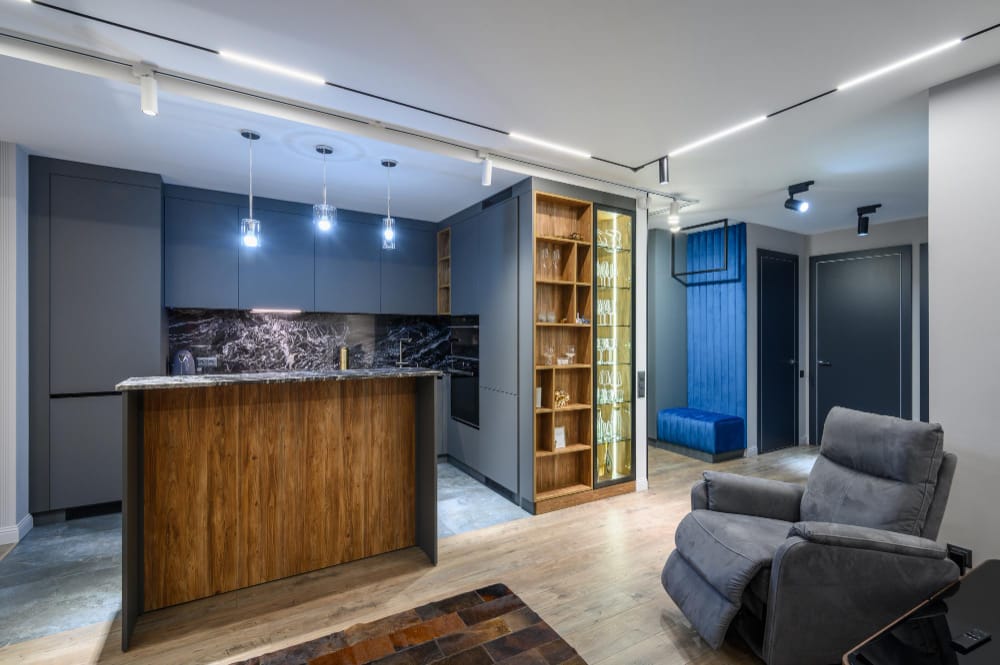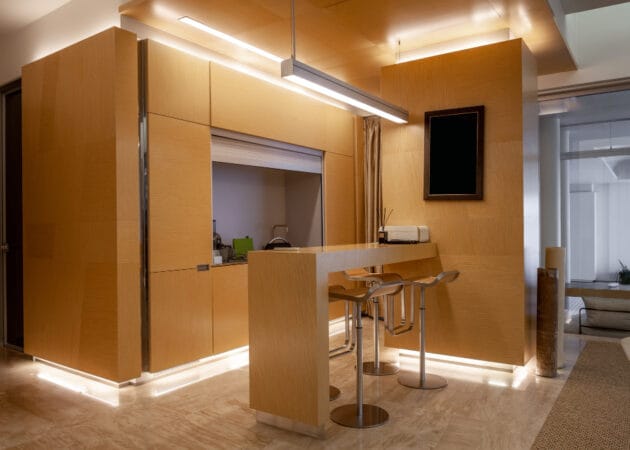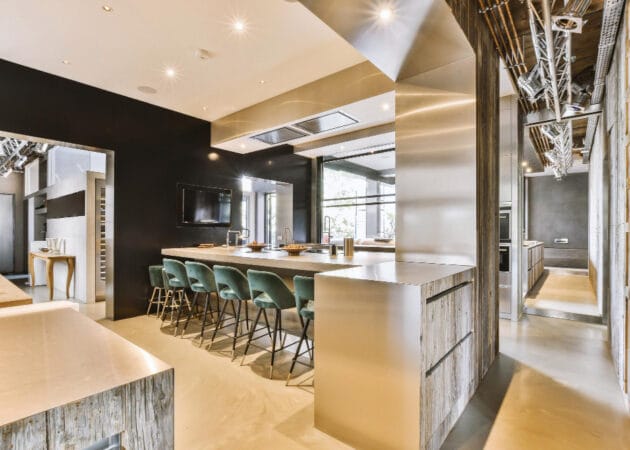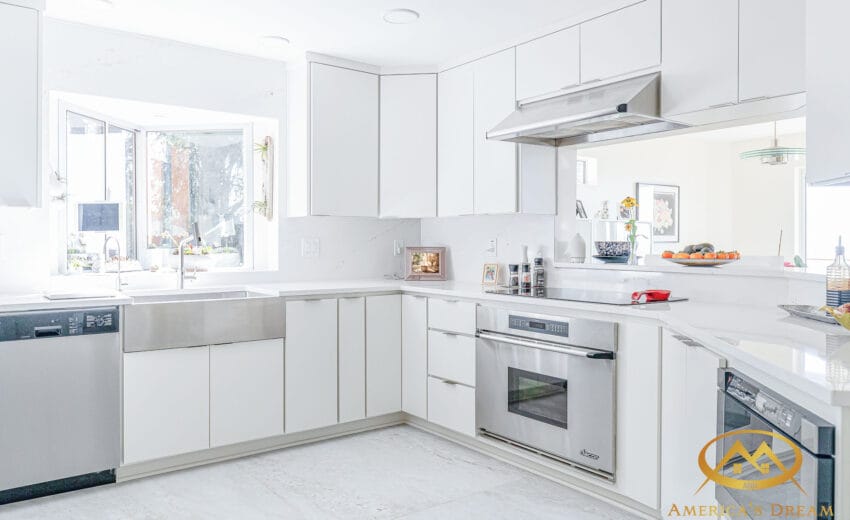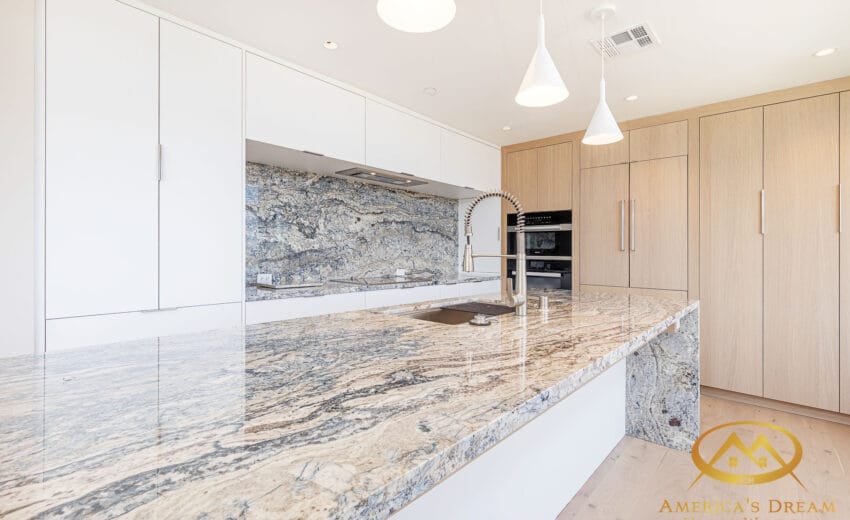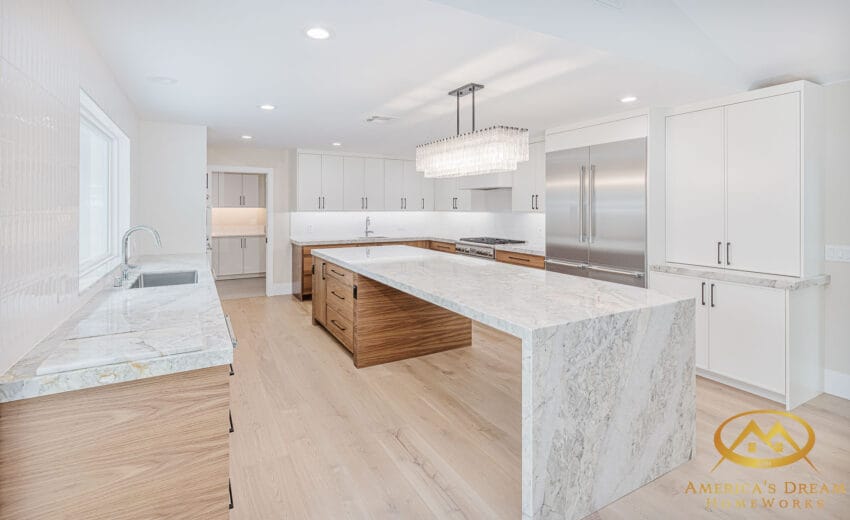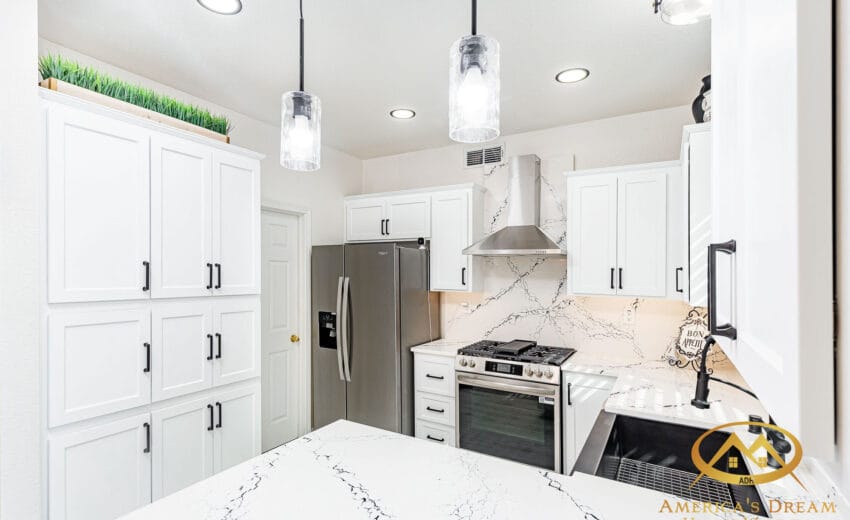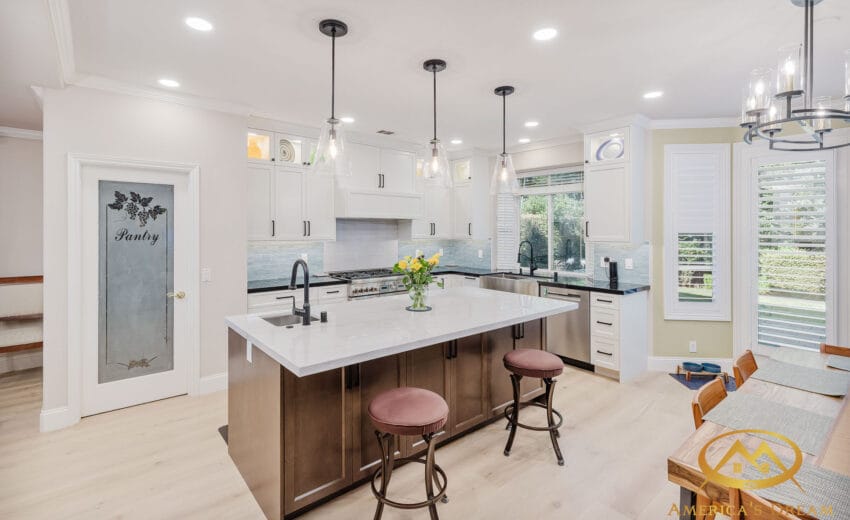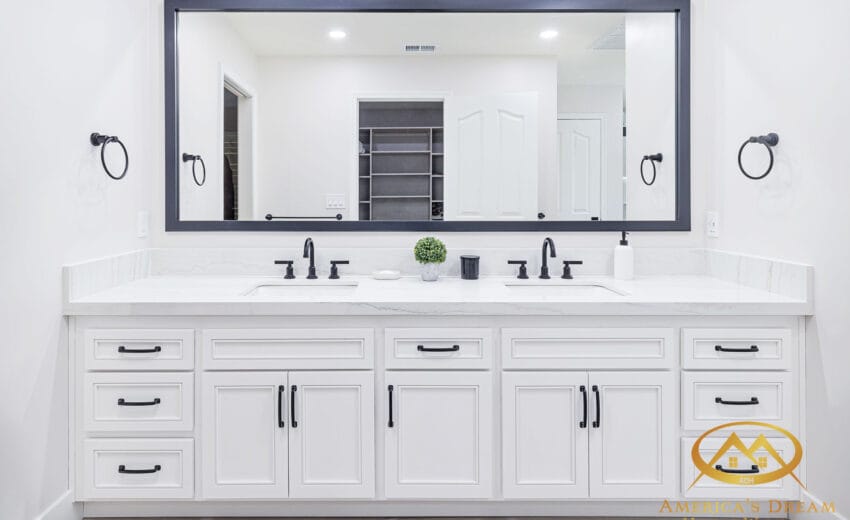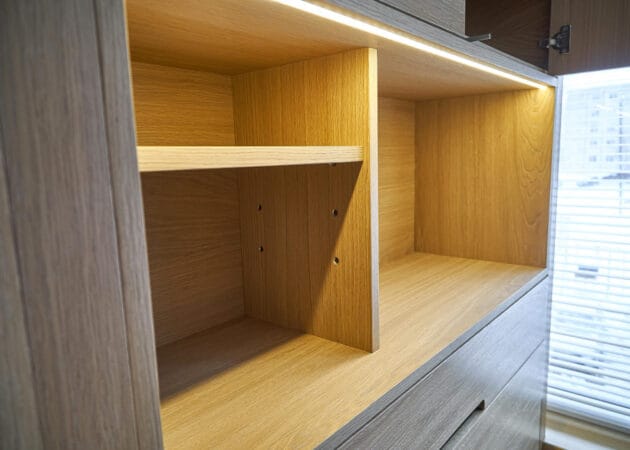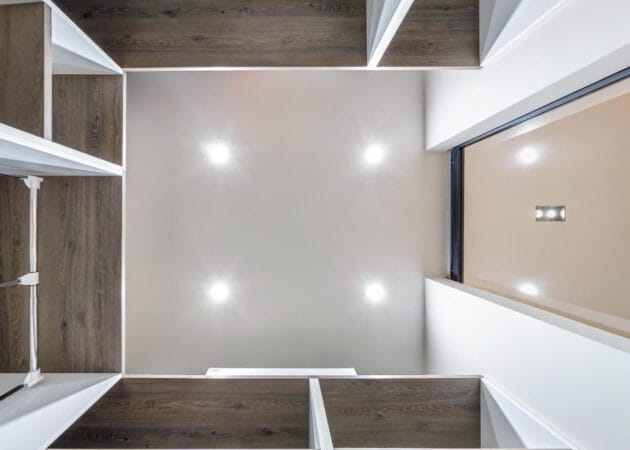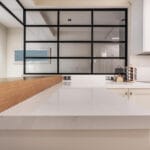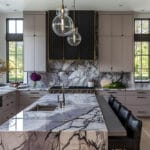Ah, the cabinet soffit. That mysterious boxy structure sitting above your kitchen cabinets like it’s hiding state secrets. You know the one — too small to be useful, too big to ignore, and somehow always in the way when you’re dreaming of taller cabinets and beautiful crown molding.
If kitchens had villains, the cabinet soffit would be the sneaky sidekick. But before you grab your demo hammer and start swinging, let’s talk about what those soffits are actually doing up there — and how you can turn that awkward box into something truly elegant.
What Exactly Is a Cabinet Soffit?
A cabinet soffit (also called a “bulkhead”) is the boxed-in section between the top of your upper cabinets and the ceiling. It usually hides ductwork, wiring, or plumbing that couldn’t be routed elsewhere — or, in some older homes, it’s just there for aesthetics (read: to fill empty space cheaply).
Back in the day, builders used soffits to make standard-sized cabinets fit more “neatly” in rooms with tall ceilings. Translation: it was easier than custom cabinetry.
👉 If your home still has older soffits and you’re dreaming of sleek, modern cabinets, explore kitchen remodeling services that include custom cabinetry design and soffit removal.
Why Everyone Hates Them (and Secretly Needs Them)
Let’s be honest: soffits are the architectural equivalent of socks with sandals. Functional? Sure. Stylish? Not so much.
But before you rip yours out, here’s the twist — sometimes, you actually need them.
If your soffit is hiding ductwork or electrical lines, removing it could mean:
Re-routing ventilation (expensive).
Moving wiring (more expensive).
Drywall repair and retexturing (you guessed it, still expensive).
👉 Moral of the story: the soffit might not be your enemy — just a misunderstood house feature doing its job quietly.
The Modern Luxury Fix
Now, let’s talk design. Because even if your soffit has to stay, it doesn’t have to look like it’s from 1985.
Here are a few clever — and seriously good-looking — ways to make peace with that upper-box situation:
1. Disguise It with Trim and Molding
Think of it as giving your soffit a glow-up. Extend your cabinet design upward by wrapping the soffit in matching panels and crown molding. Suddenly, it looks like part of the cabinetry instead of an afterthought.
Pro tip: Painting the soffit and cabinetry the same color creates a seamless, built-in effect — an instant luxury move that feels custom.
2. Turn It Into a Design Feature
Instead of pretending the soffit doesn’t exist, lean into it. Add recessed lighting to cast a soft glow, or use the soffit area to frame a bold backsplash or tile wall.
Bonus: uplighting along the soffit edge can make your ceiling look taller. That’s right — the box that once shrunk your kitchen can now expand it visually.
👉 Pair this trick with an elegant tile backsplash upgrade for a cohesive, high-end look.
3. Add Open Shelving Below
If you’ve removed upper cabinets but kept the soffit, it can actually anchor a row of open shelves. Picture warm wood planks or sleek glass shelves floating below — perfect for plants, dishes, or those fancy coffee mugs you pretend you use daily.
It’s a high-end design trick that feels fresh and intentional.
4. Hide Smart Storage or Vent Covers
If you’re remodeling, consider converting part of your soffit into hidden storage — like shallow compartments for baking sheets or vent covers that blend into your cabinetry.
In luxury kitchens, designers often use soffits to conceal range hood ducting, creating a clean, architectural finish without bulky metal vents.
Check Our Recent Projects
When It’s Worth Removing the Soffit
Sometimes, the only way forward is up.
If you’re planning a full kitchen remodel, removing the soffit makes sense — especially if:
You’re upgrading to taller cabinets.
You’re replacing old ductwork anyway.
You want to add more vertical storage or lighting.
Just remember: what looks like an empty drywall box could be hiding surprises (and not the fun kind). Always check with your contractor before tearing anything down.
👉 A professional kitchen remodel can safely reconfigure your soffit while enhancing both function and design.
Luxury Kitchens Without the Bulk
In high-end kitchens, designers often eliminate soffits completely and extend cabinetry to the ceiling. The look is seamless, custom, and elegant — a visual cue of craftsmanship and intention.
But you can absolutely achieve a similar luxury feel even if your soffit stays. The secret is continuity — matching paint, aligned lines, and thoughtful lighting that make the soffit feel like part of the design story, not a plot twist.
The Funny Thing About Soffits
Once you notice them, you can’t unsee them. It’s like when someone points out that your favorite movie has a plot hole. Suddenly, every kitchen you walk into, you’re checking for that box above the cabinets.
But here’s the thing — a well-designed soffit can actually add character. It’s like the kitchen equivalent of bangs: they can go terribly wrong, or look stunning when styled right.
Final Thoughts
So, what’s the verdict on cabinet soffits? They’re not the design disaster everyone makes them out to be. Sure, they started as a shortcut, but with the right upgrades, they can actually bring polish and sophistication to your space.
At America’s Dream HomeWorks, we’ve helped homeowners transform outdated soffits into high-end features that blend seamlessly into their dream kitchens.
✨ Ready to turn your “awkward box” into a design win? Explore our kitchen remodeling services and see how we can reimagine your kitchen from top to bottom — soffit and all.
